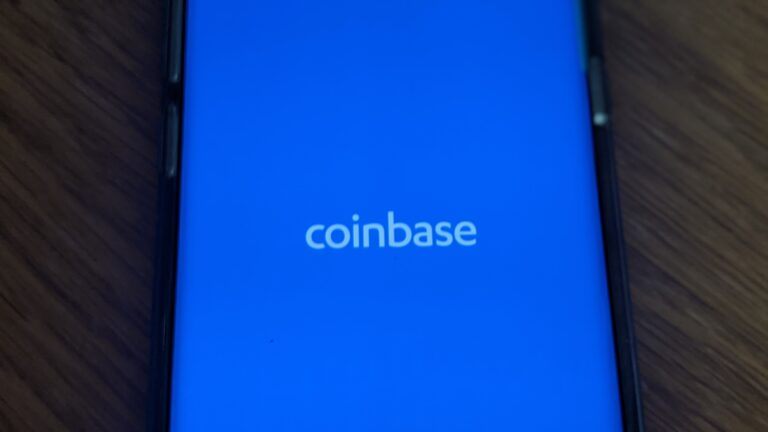On Thursday (May 13), Coinbase Global, Inc. (NASDAQ: COIN) released its Q1 2021 Shareholder Letter and had its Q1 2021 Earnings Call and Q1 2021 Analyst Q&A Call. In this article, we highlight some of the more interesting comments made by CEO Brian Armstrong and CFO Alesia Haas.
Support for Dogecoin
CEO: “We plan to list Doge in the next six to eight weeks. And then more broadly, we’re going to be focused on how we can accelerate asset addition in the future.“
Future Products and Services
CFO: “… we are definitely focused on building new products and services and to diversify our revenue streams. Many of these new revenue streams are reported as subscription and services revenue, which generated $56 million of revenue in the first quarter. Our goal is to become the primary financial account in the crypto economy for our users…”
Staking
CEO: “We actually crossed a million customers using our staking products in Q1 and it’s become a nice source of revenue for us.“
Competition With Other Centralized Crypto Exchanges
CFO: “… our biggest focus right now is to keep up with the current demand. We are not focused on competing with fees, we’re not trying to even win on fees, we’re trying to win on being the most trusted, easiest to use, on providing all the assets that our customers want to transact with, on being able to provide a yield on crypto assets, the opportunity to engage in defi as Brian just talked about.
“Our customers choose us because they trust us to keep their assets safe. We provide an easy to use platform and a growing number of ways to transact and use crypto assets.
“Our institutions are choosing us for our secure storage as well offered by our custody solution, the deep liquidity we offer on our exchange, and our best trading execution where we are able to route orders across more than 10 liquidity venues, including other exchanges to find the best price to execute client orders.“
Long-Term Risks of Regulation
CEO: “I think the risk is that, basically, it causes us to move more slowly, it takes time to operate in that environment. There are certain occasions where there’s products that our competitors might offer that we don’t feel comfortable offering because of the feedback that we’re getting from regulators. And so the risk is it’s really around speed of execution, but I think the right approach is to not try and cut any corners, it’s to try to work with regulators to create a trusted environment and help the industry grow in that framework.“
Listing Additional Cryptoassets
CEO: “… there’s no doubt that we need to accelerate the process by which we review assets and we add them to the site, because we’re quickly going to be in a world here where there’s so many that we’re not going to be able to keep up, unless we accelerate that process… the question also asked about debut coins, we sometimes call those day one listings. I think these are really important. In the past, we would sort of say, is this coin, has it reached some substantial scale, and then we would add it. But I think what we’re going to have to do in the future is actually be first to list the number of these coins. And that’s going to be really important to our business.“
Demand From Institutional Investors
CFO: “So, we’re seeing great interest from all corners of institutions, whether they’re hedge funds, asset managers, corporate, pensions, endowments, insurance, I mean you name it and people have started to explore interest in Bitcoin, Ethereum, and increasingly even a longer tail of crypto assets…
“Today what we offer as you see in our financials is largely trading and custody. We are looking to expand our Borrow & Lend products we’ve been building out the full suite of prime brokerage services that those firms will be accustomed to see in a traditional financial services prime broker, but the Borrow & Lend products are very nascent at this time, and we expect to see future growth in that area.“
CEO: “The only thing I would add is one other customer segment we’re seeing interest from there is corporate treasuries as well.“
The Future of Crypto
CEO: “So, I think we’re seeing crypto, first, be used as for investment, people are trading it. We’re now, that will come at the stage one.
“Stage two is crypto in financial services, and so that’s where you’re starting to see things like decentralized exchanges, DeFi, decentralized borrowing and lending, decentralized insurance. And so I think that trend will continue and you’ll see greater adoption of DeFi.
“And then I guess in the third phase, what we’re going to see here in the future is really around crypto as an app platform. And so that could mean people using crypto as kind of like the next version of the internet, they will build their application natively on blockchains, even if they have nothing to do with financial services, and we’re seeing some early signs of that, people are doing things like identity management, they’re creating games, they’re doing things like artwork with NFTs…
“And I think you’ll see new forms of governance and voting too where people are creating new types of autonomous organizations where proposals can be voted on by people with these coins and all over the world coordinating on various problems and challenges…“
Tesla CEO’s Concern About Energy Consumption of Crypto Mining
CFO: “First of all, we really appreciate the focus on energy consumption and we welcome the discussion on the topic. Crypto is such a nascent industry. It’s nice to see the industry pointing in the right direction and getting focused on issues that are important to investors early on and we have a chance to move the needle meaningfully.
“From the bigger picture, we expect the cryptoeconomy by design to bring that benefit to the world, both from an environmental standpoint and from a social perspective as it proliferates, especially relative to legacy fiat financial systems. And that while the industry is really nascent, we are really encouraged to see the shift in new protocols from proof of work to proof of stake. So, for example, Ethereum 2 is now a proof of stake network, and proof of stake are inherently more energy efficient than proof of work protocols, which is what bitcoin was based on.
“But on the proof of work protocols, we know that the miners, again, are very incentivized to find forms of energy that are clean energy, that are cheap forms of energy. And so what you often see is they’re locating their mining operations near renewable energy sources. They also have the ability to mine in the off hours when there’s excess energy available and they have full ability to structure their operations in that way, which is dissimilar to so many other industries which are large fossil fuel consumers.
“… 76% of proof of work mining is actually using renewable energy sources. So it is very high. We can share those research studies with you. And, as I mentioned, we also see just that incentivization to find that inexpensive clean energy really driving new miner behavior. So on the proof of work we think that’ll be a positive trend. And then with the shift in these new protocols moving to proof of stake, which is more energy efficiency, we think that that is also a really positive trend for the overall crypto economies’ energy usage.
“So we believe that, again, over time that crypto will become a relatively low consumer of energy, especially when compared to other industries and the traditional fiat system.“









